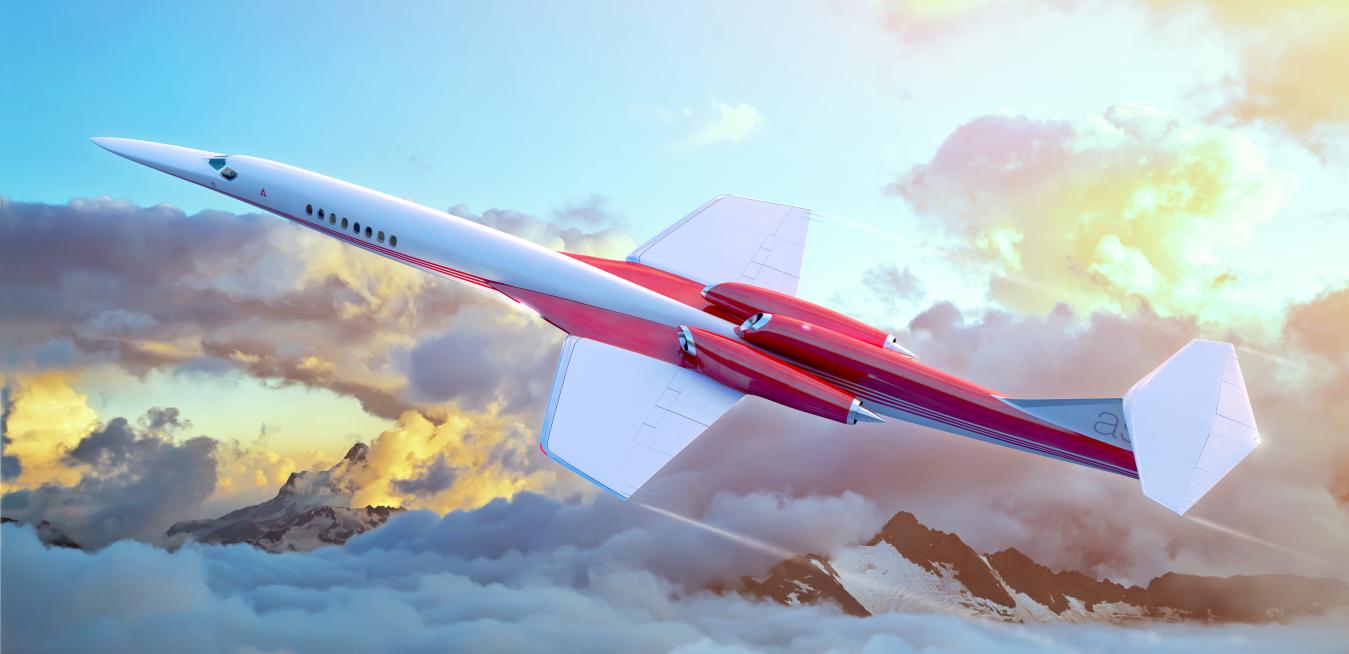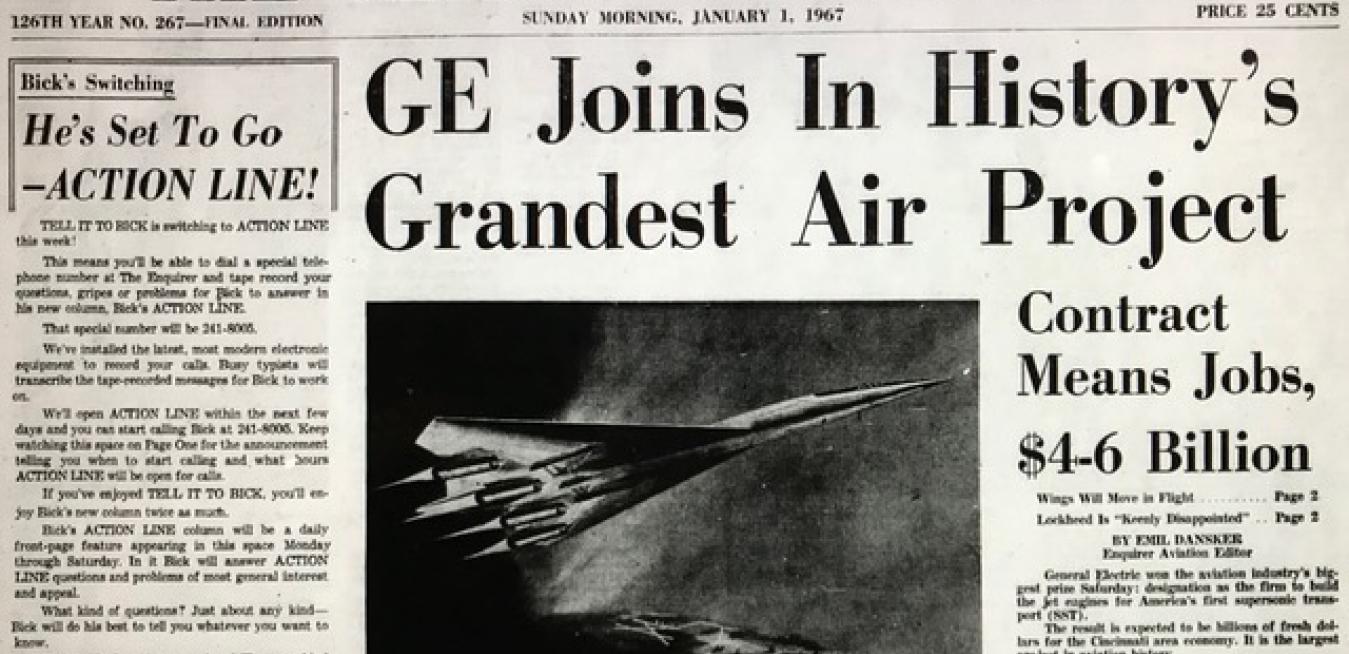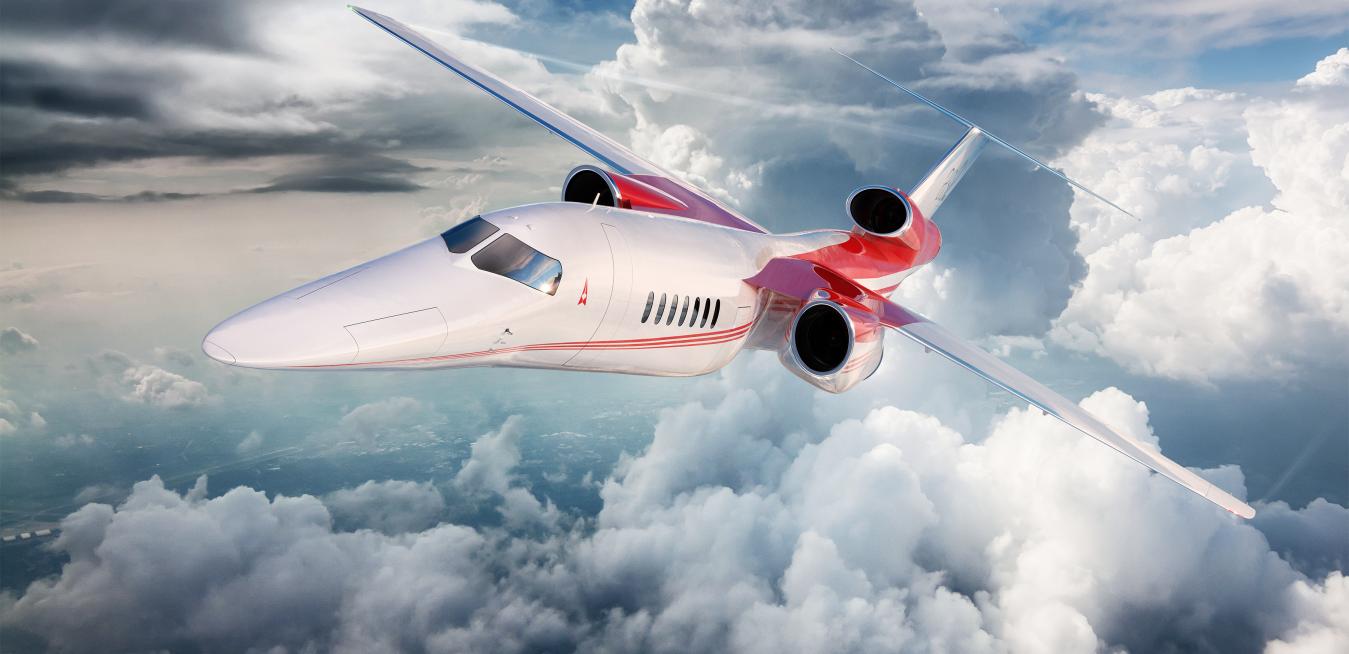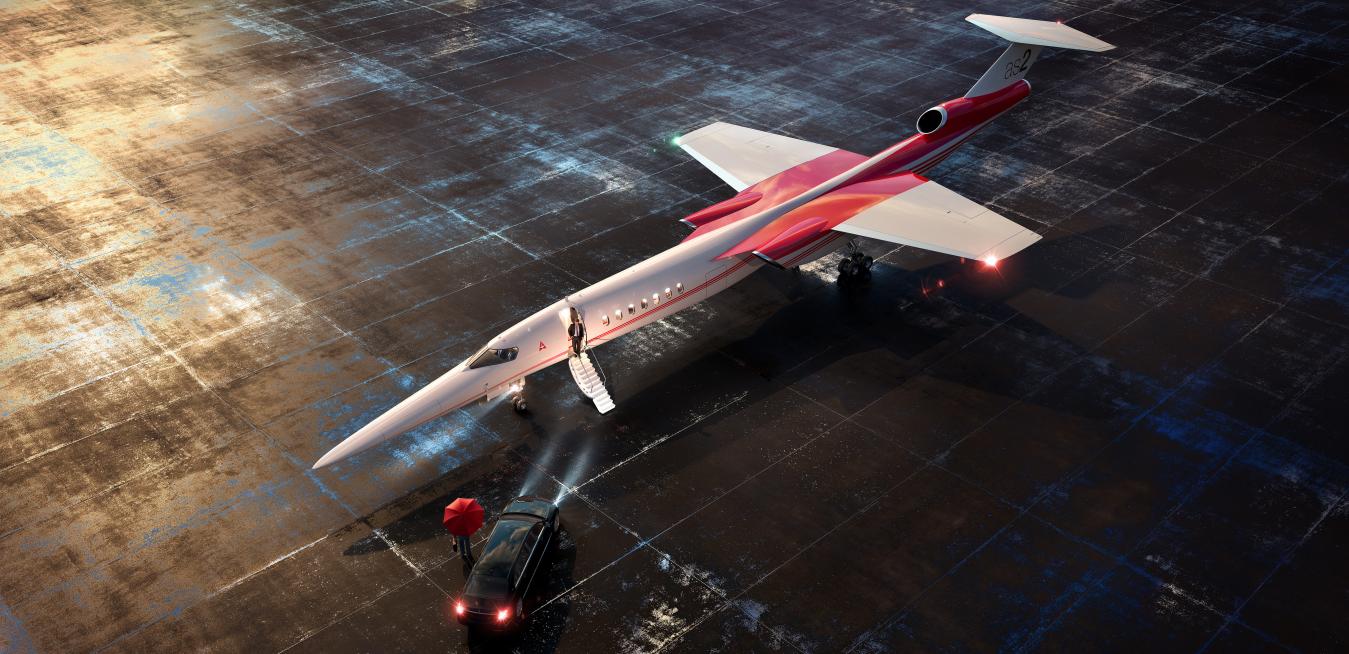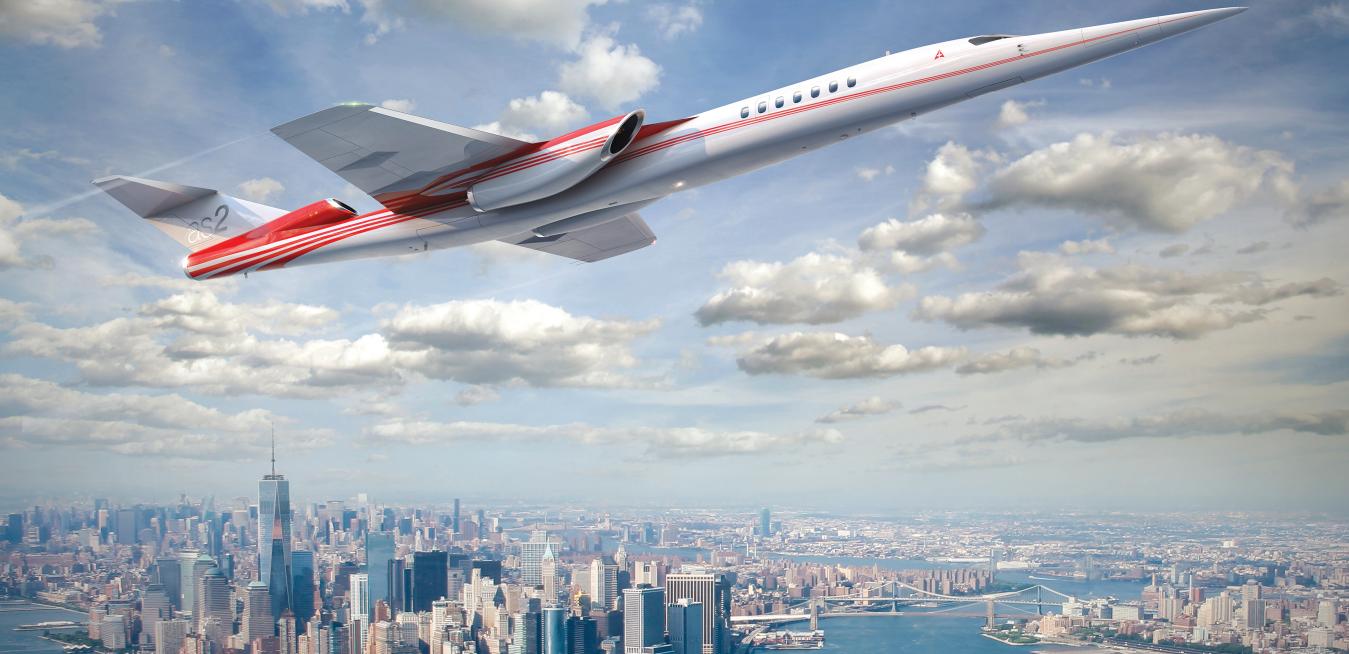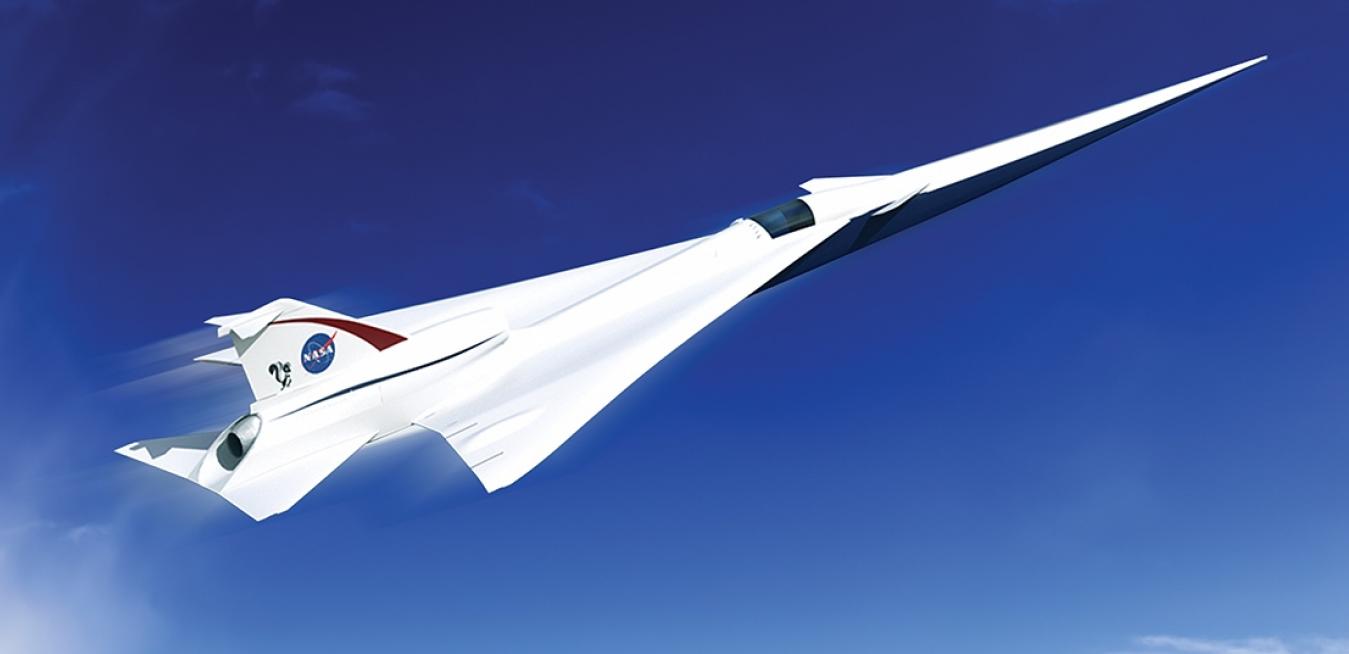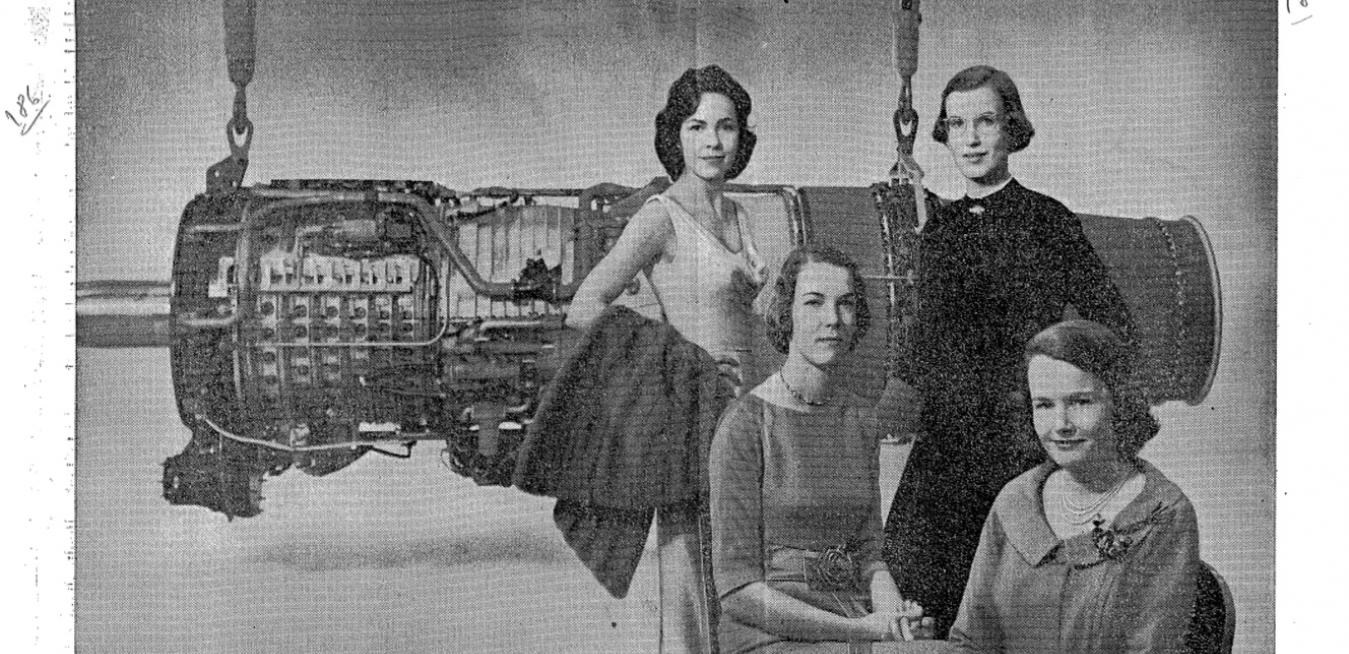First-time visitors arriving for a meeting at GE Aviation’s headquarters should give themselves a few extra minutes: Located in the Cincinnati suburb of Evendale, Ohio, the plant is huge, security is tight — and there are distractions everywhere. Perhaps the largest, a massive jet engine stretching some 27 feet long, collects dust along a wall inside Building 700. Too big to fit in the company’s museum, which is also located on the Evendale campus, the lone surviving GE4 turbojet is a stunning relic from an era when everything in commercial aviation seemed possible.
Time-strapped travelers will like the sound of this. Early in February, Boeing announced it would partner with Aerion Supersonic, a Nevada company that has spent the last two decades developing a supersonic business jet called the AS2. Boeing said in a news release it would “provide engineering, manufacturing and flight test resources, as well as strategic vertical content, to bring Aerion’s AS2 supersonic business jet to market.”
The plane could accelerate above the speed of sound only over the ocean. The prospect of noisy sonic booms caused by the plane crossing the sound barrier forced pilots to hold back the throttle above towns and cities after takeoff and before touchdown. “This speed limit actually made the plane much less efficient,” says Karl Wisniewski, director of advanced programs at GE Aviation. “It was designed to fly fast.”
Engineer Mark Leary has been helping GE Aviation build jet engines for three decades. The work is in his blood — literally. More that 60 years ago, Mark’s mother, Patricia, helped the company design the supersonic engine that allowed Lockheed to build the F-104 Starfighter jet, known as “the missile with a man in it” and capable of sustained flight at twice the speed of sound, or Mach 2.
